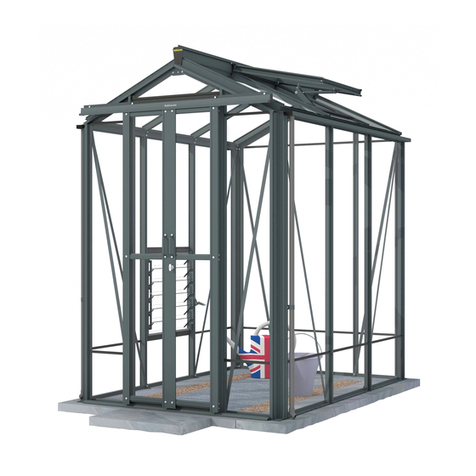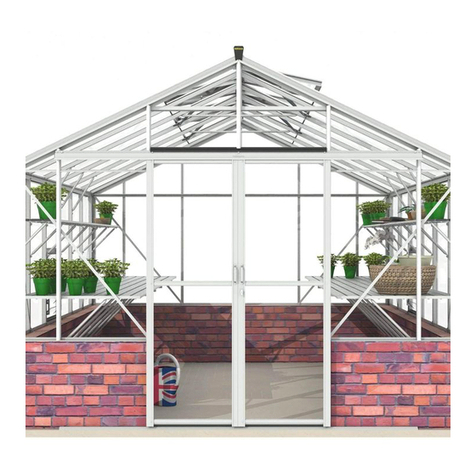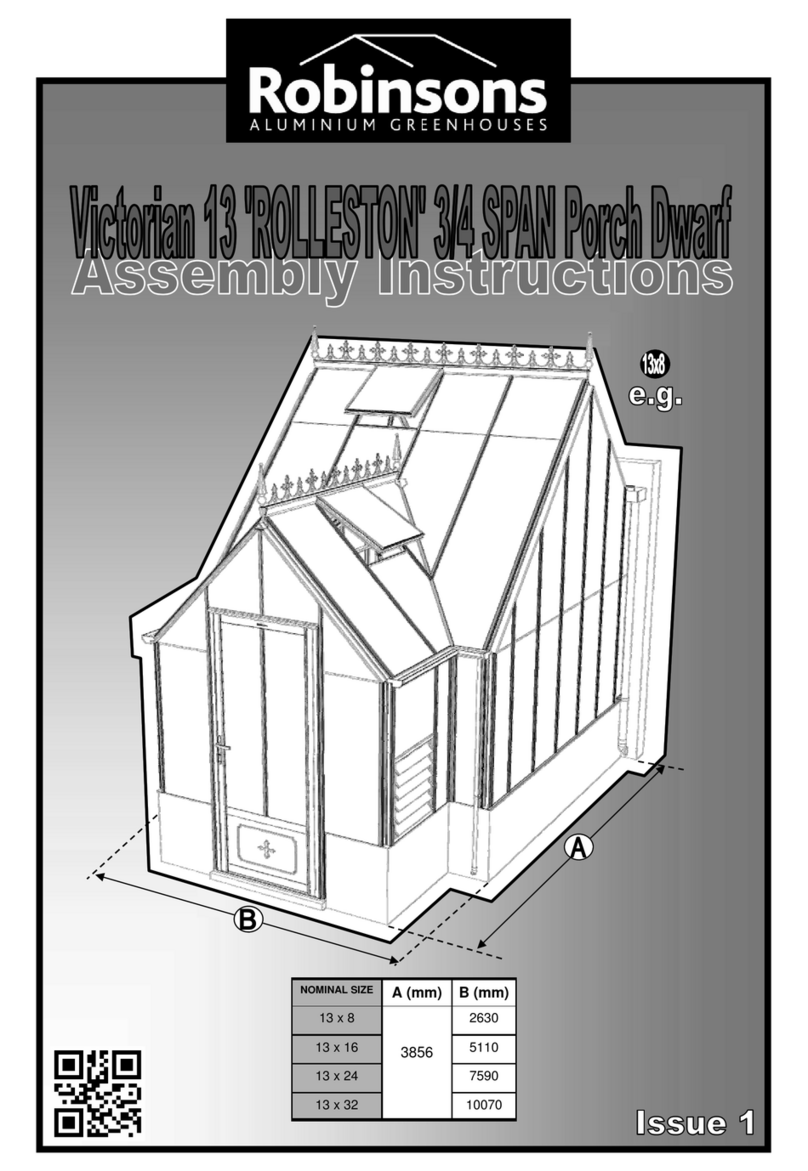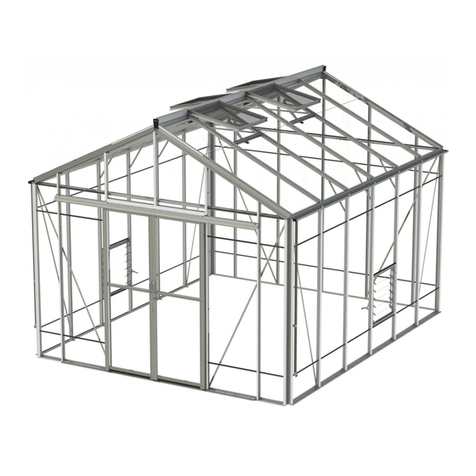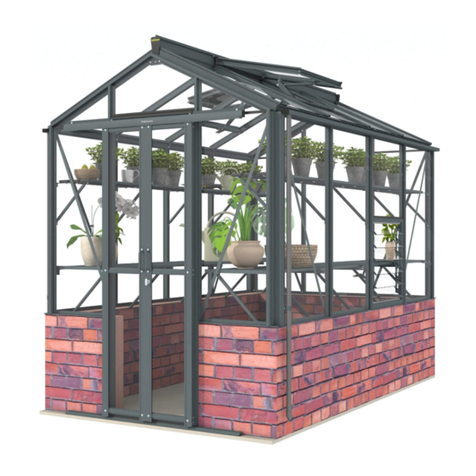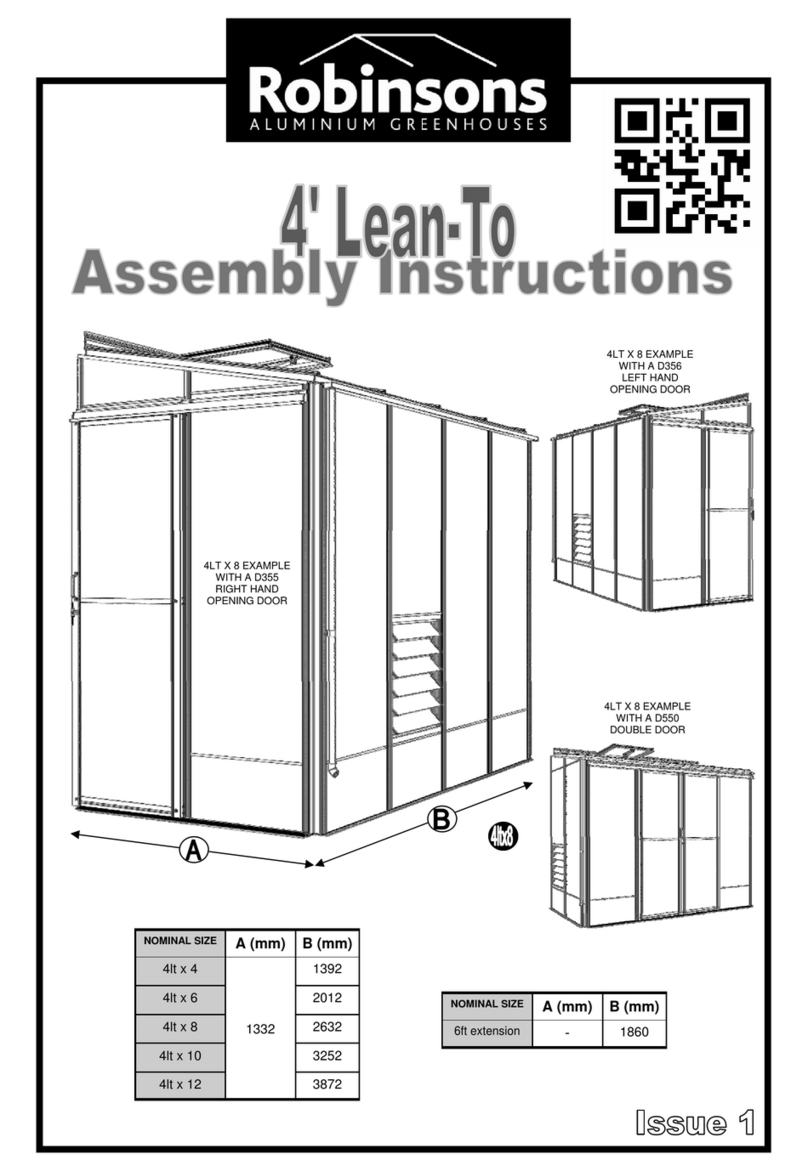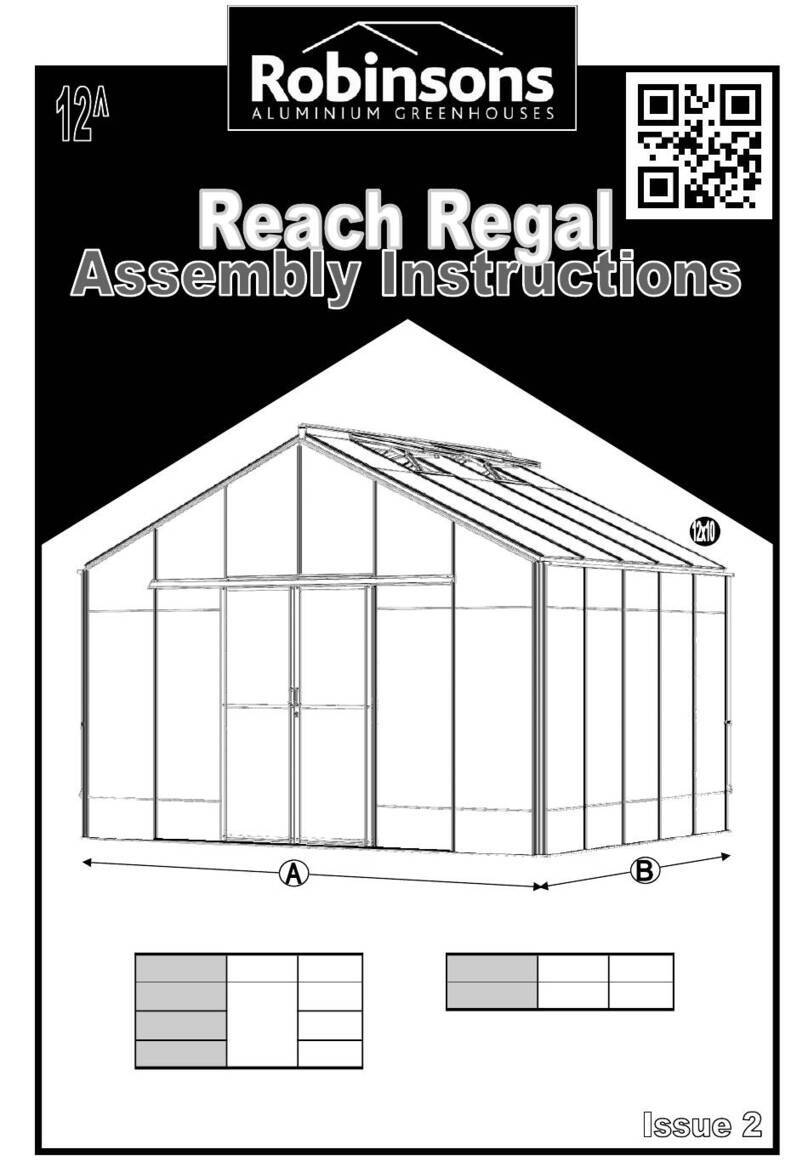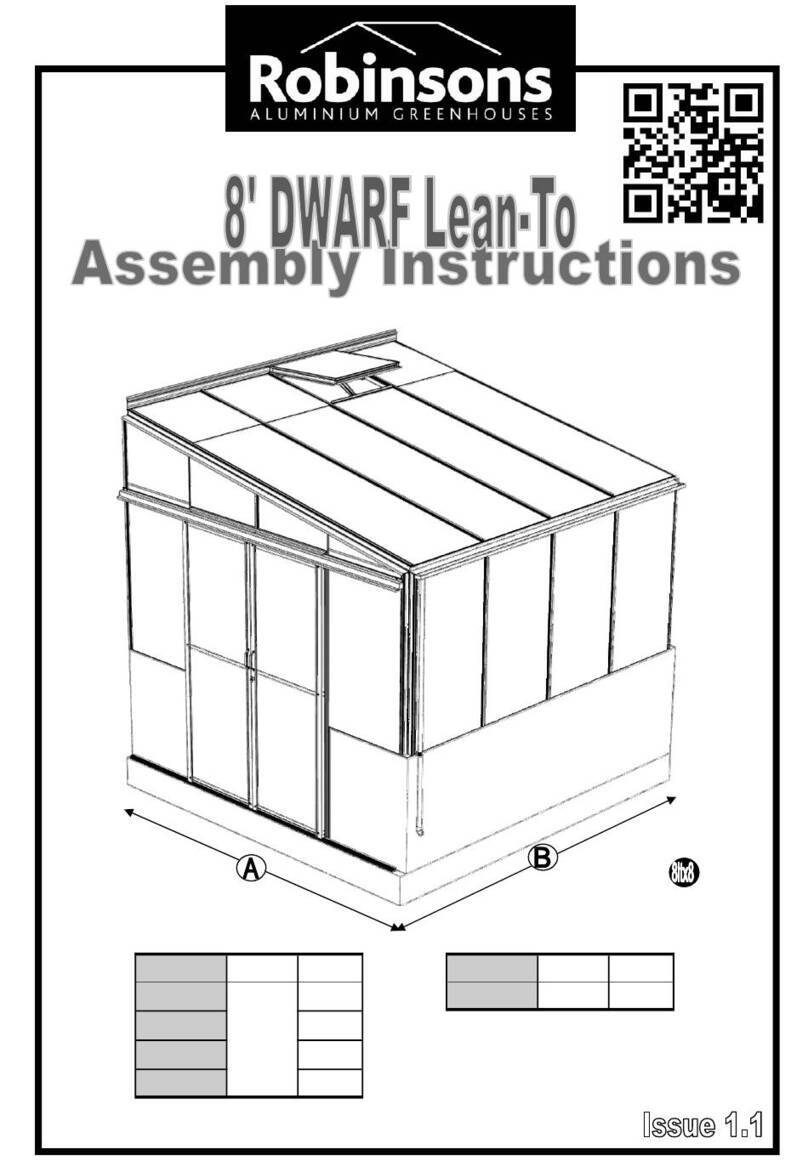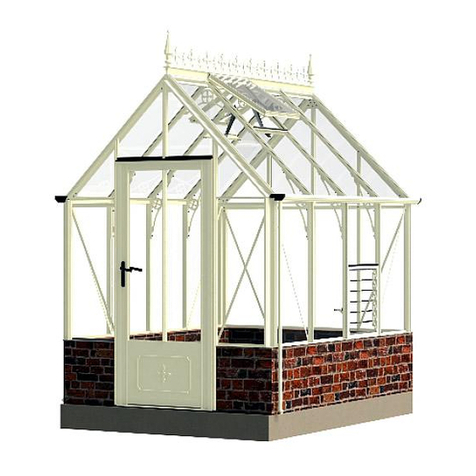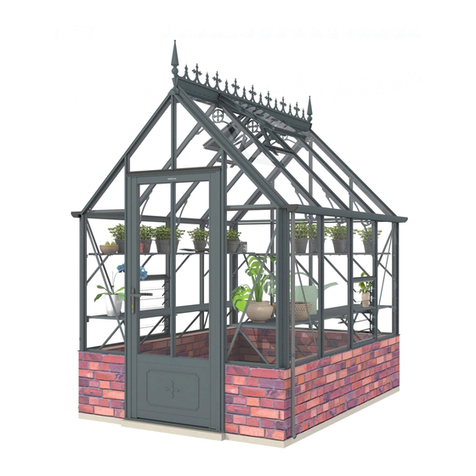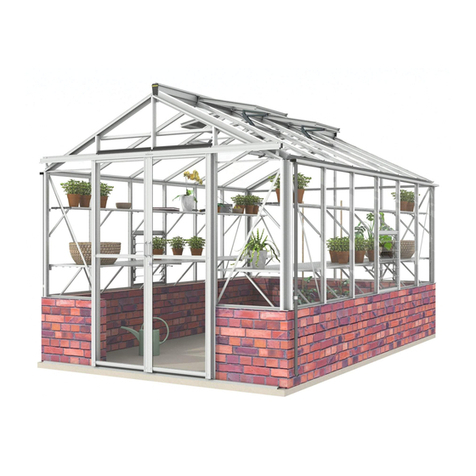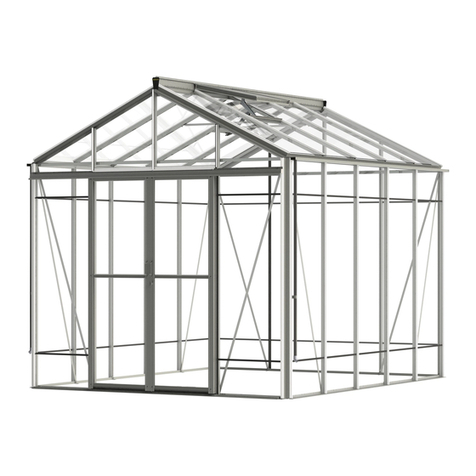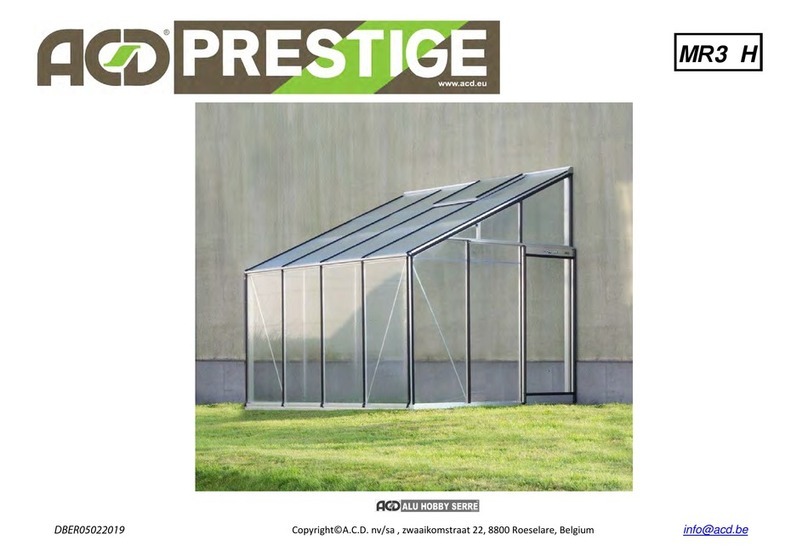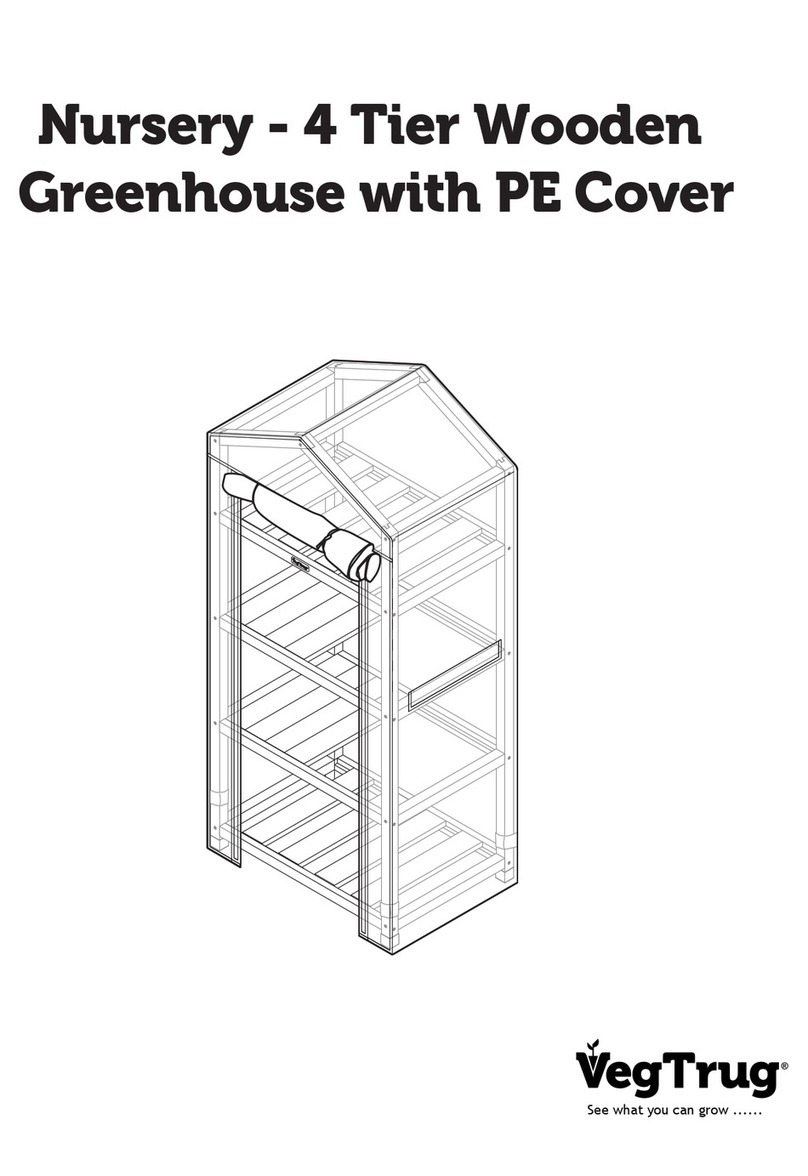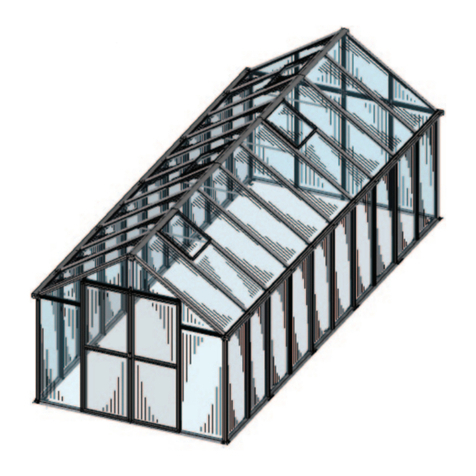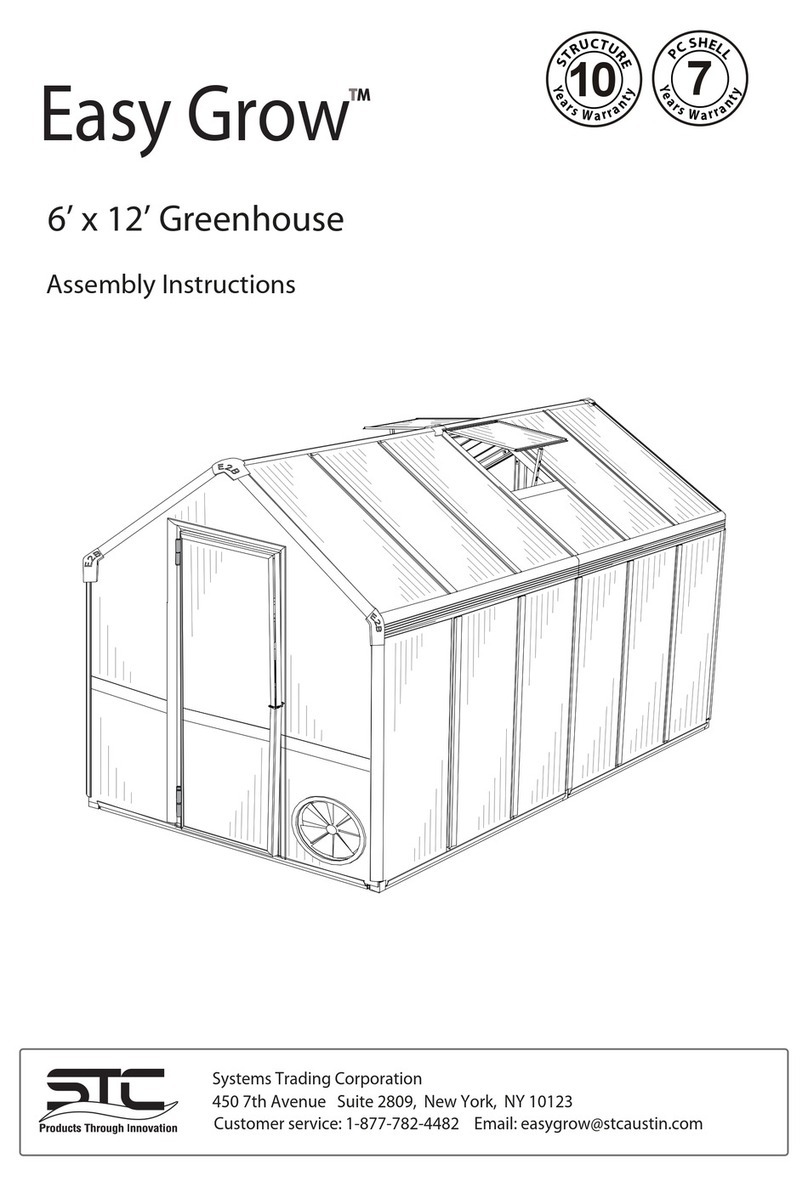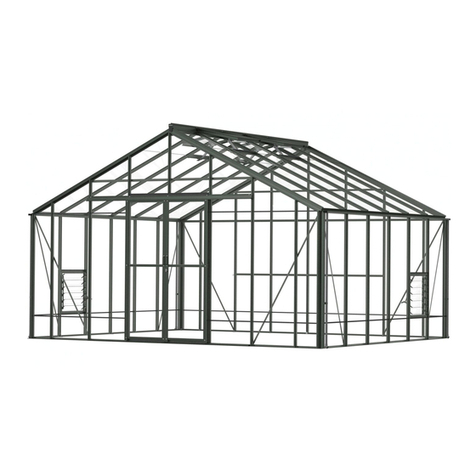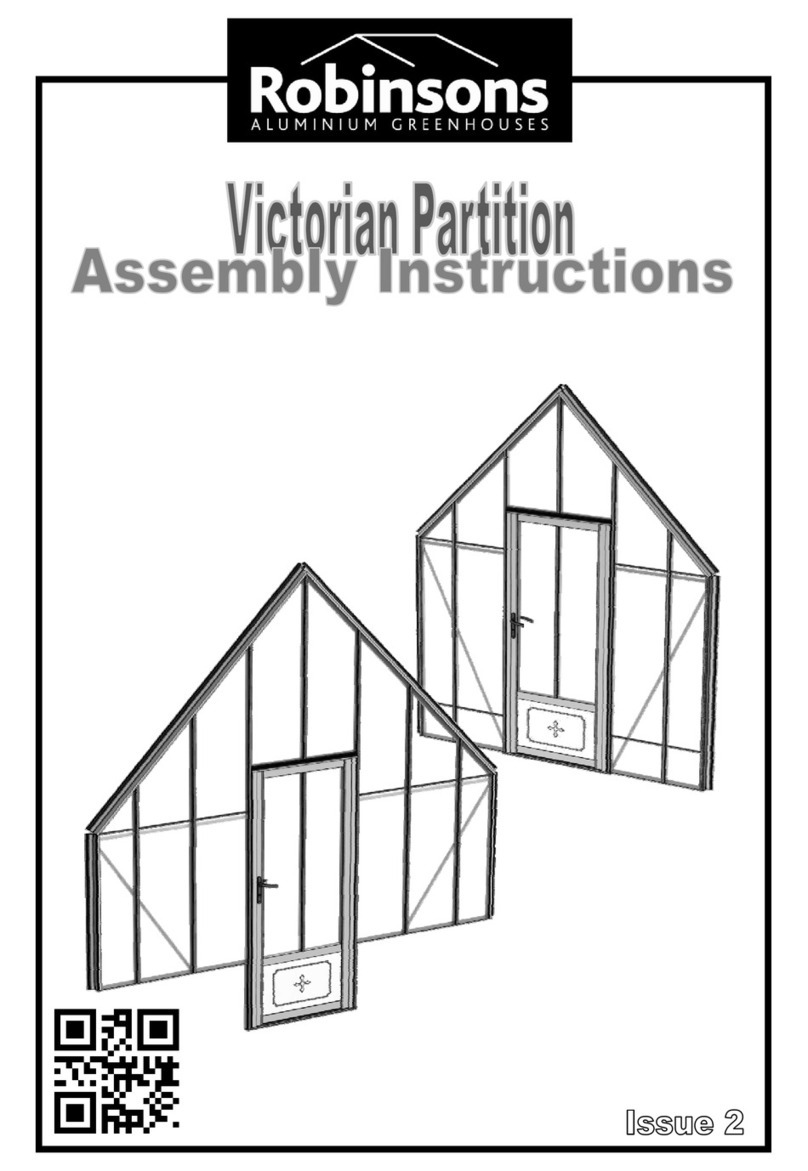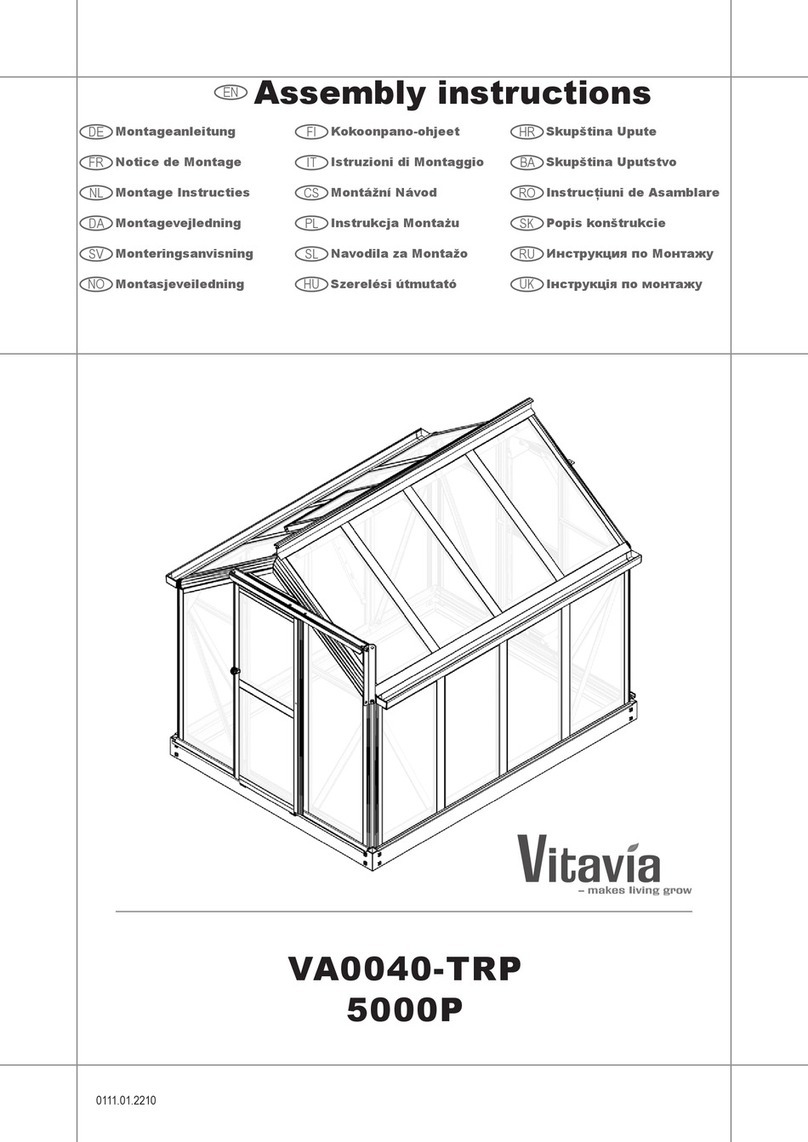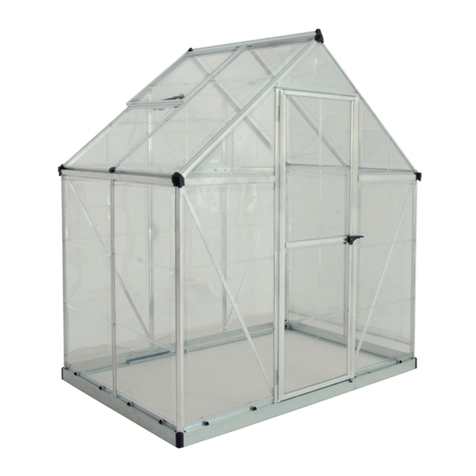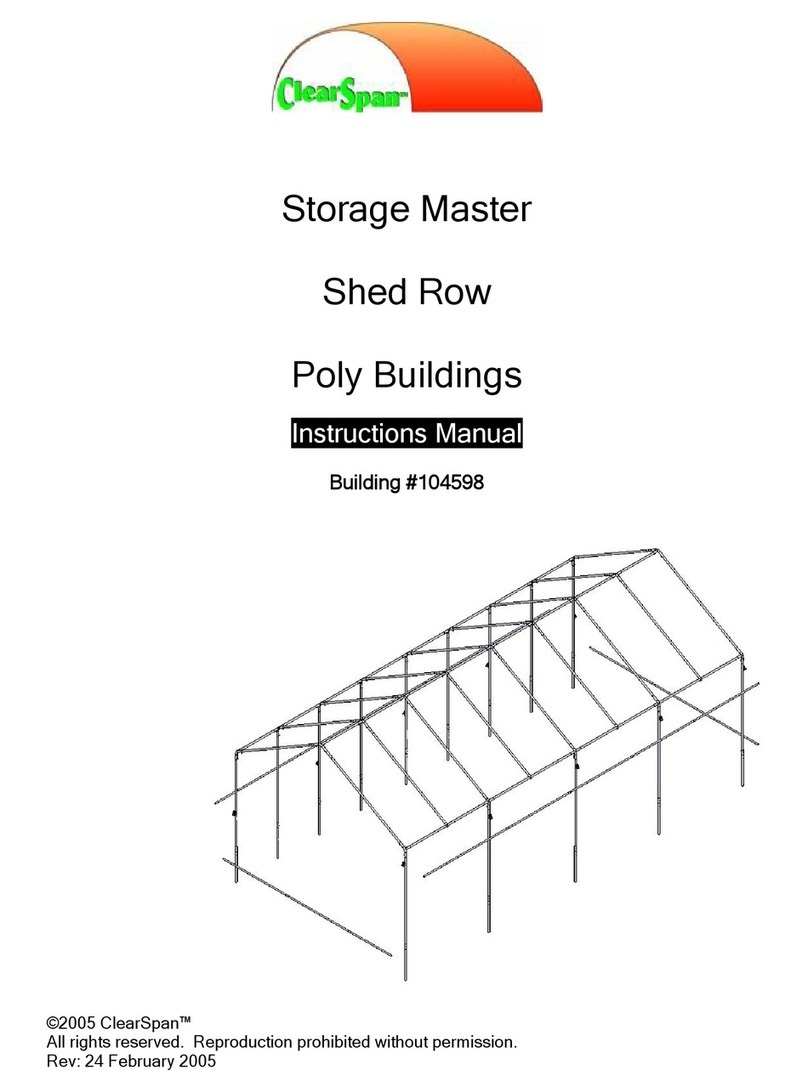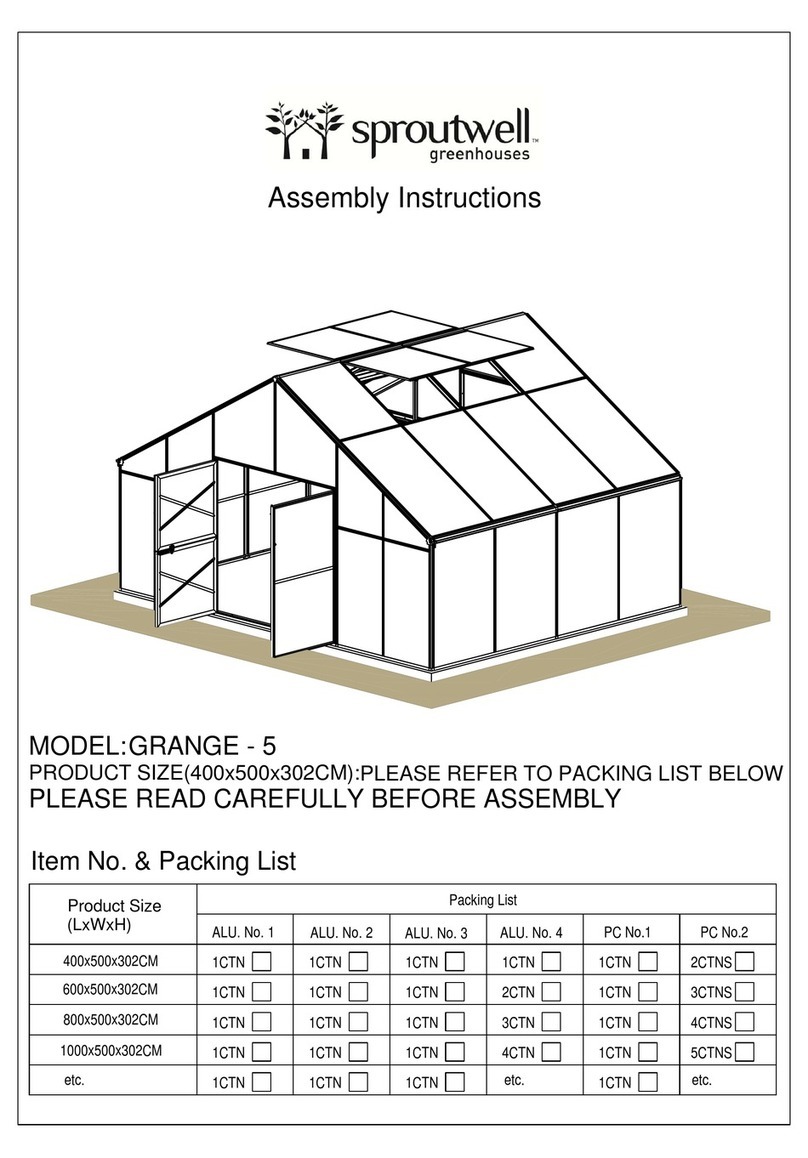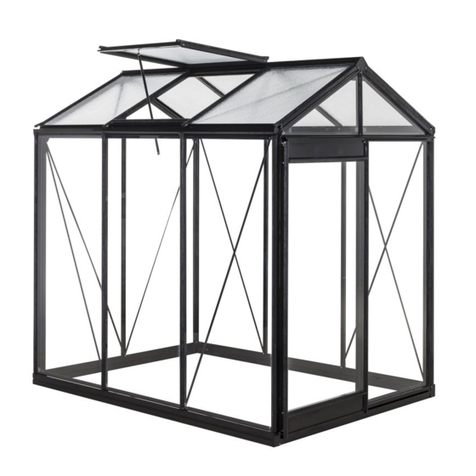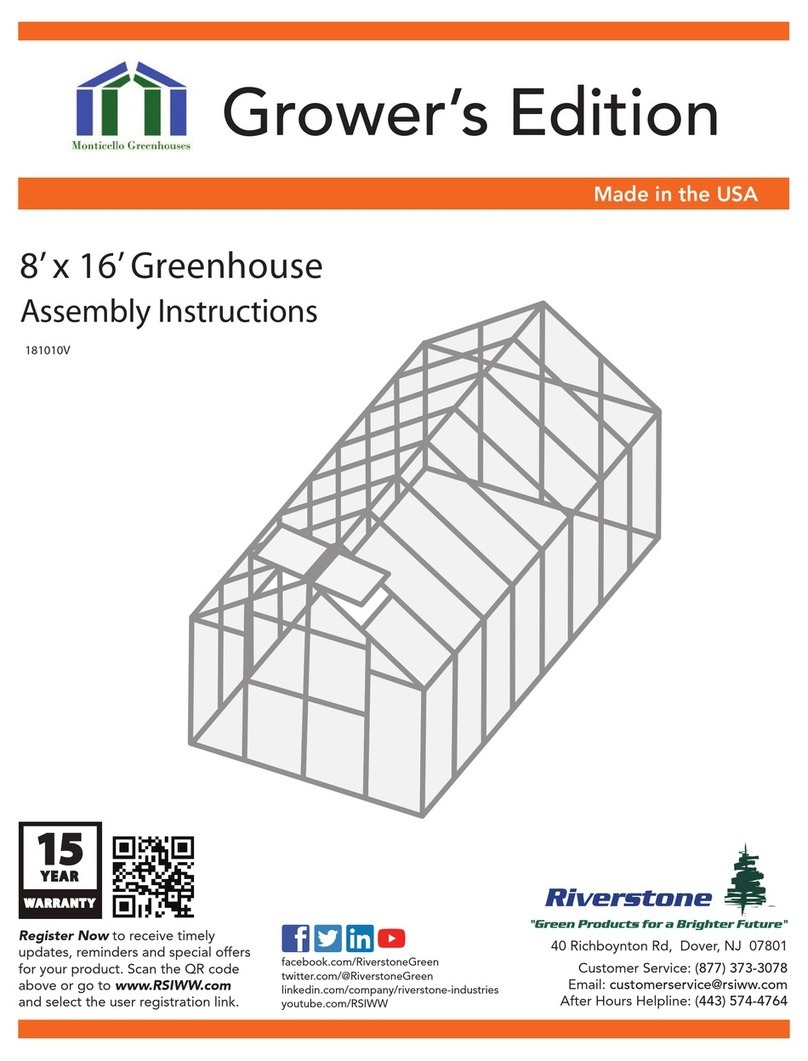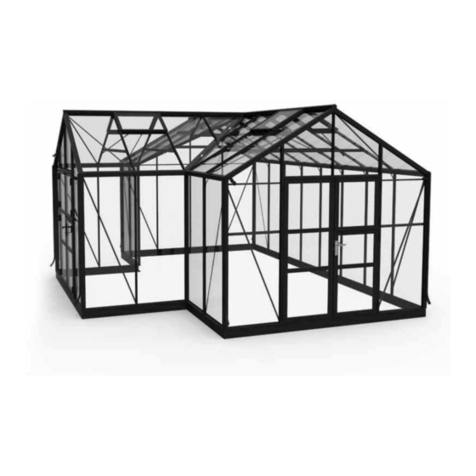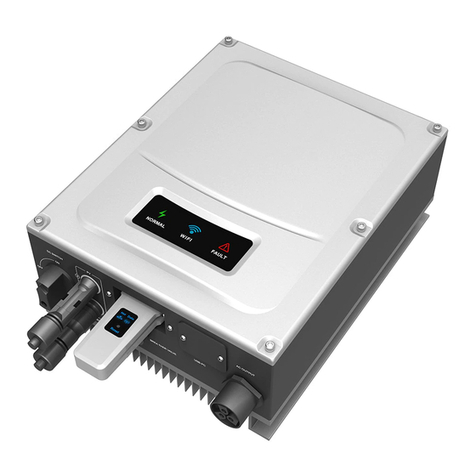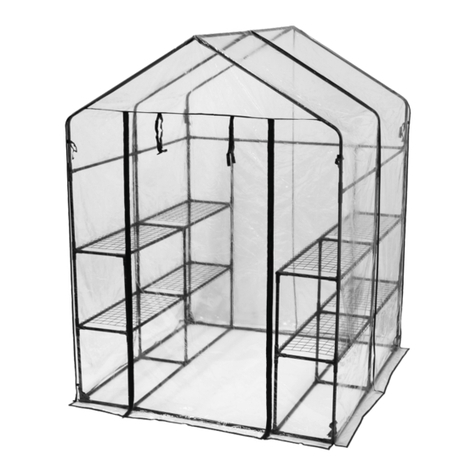
3
SECTION
No TITLE ASSEMBLY SYNOPSIS: IMPORTANT INFORMATION / CONSIDERATIONS
PARTS LIST Most components should have a ‘D’ code punched into their metal surface. Identify and sepa-
rate all like for like components prior to assembly. The ‘parts list’ also separates parts into the
various sections 1 - 12 shown below. Parts can also be identified by their profile pictures and
stated lengths etc..
B
BASE Base dimensions and recommendations. Ensure that your base is level as this will make as-
sembly of the building, especially the glazing of the roof much more straight forward.
P PREPARATION Tools required. IMPORTANT: Use WD40 or similar in the glazing bar channels and insert the
black glazing rubber prior to frame assembly.
1
SIDE Take the side glazing bars ‘D066’ with the rubber inserted and the diagonal braces ‘D103’,
use 10mm bolts to join them to the gutter and 15mm bolts to the cills (note how the head of
the bolt slides into each glazing bar during construction).
2 FRONT Again ensuring that the gable framework is rubbered-up follow the diagrams to assemble
each end of the building. Make sure that you have inserted the extra bolts utilised in sections
4, 5 and 11. On the roof and side corner bars not every rubber channel will require rubber
unless it is to be utilised in a partition (see separate manual and section P).
3 REAR
4 JOINING THE
THREE SIDES Take the side (1) and both gables (2 & 3) and join them together on your base. It is a good
idea to tie some ladders to the side to support them if you do not have anyone to hold them
for you.
5 ROOF Attach the ridge and then the rubbered-up roof bars ensuring that they are fully butted up to
the ridge and down onto the gutter. Some tubular braces are supplied to add extra strength,
they can be fitted now or later with crop head bolts.
7a VENT Once the vent is glazed add silicone to the vent sides and top. Stand the vent/s on their hinge
(vent top) and then leave the silicone to set.
7b VENT SLAM The slam bar ‘D079’ can be moved up and down between the roof glazing bars so that it can
be butted down onto the pane of glass beneath, the autovent is attached to it later on (10).
8 DOOR/S Construct the door using the diagrams and then leave to one side ready for attachment in
section (11).
9
GLAZING
Layout the bar cappings and covers around the building like a sundial checking that all is pre-
sent and correct. You can also place the roof cappings in the gutters so they are closer to
hand. The glass in the sides has to bevel on the black separator strip which is on top of the
305mm high glass base panels. This bevelling action allows the glass to tuck underneath the
gutter canopy. Use the capping and the self tapping screws to then hold the glass in place.
The covers then enclose the screw heads giving a neat finish. A top tip is to not attach the door
post capping (D814/D836) until you have fitted the door runner and threshold (11) to give you more
room to manoeuvre.
10 VENT
ATTACHMENT Take the assembled vent and slide the vent hinge ‘D866’ into the end of the ridge allowing the
vent the pivot open and closed. Vent stops go either side of the vent to stop any lateral move-
ment (so insert stop / vent / stop). Attachment of the Bayliss XL autovents.
11 DOOR
ATTACHMENT Use the bolts inserted in section (2) to attach the upper door track. The lower door runner
’D860’ and ramp threshold ‘D087’ push down and lock together.
12 ANCHORING
DOWN Now that the greenhouse is finished and the door and vent/s are operating without interfer-
ence then you need to anchor the building down using 2” rawl plugs and screws. Use a 7mm
masonry bit in a hammer drill to create the holes.
13 OPTIONAL
LOUVRE They attach to the building during the glazing process (9) like a piece of glass with a black
separator above and below them.
14
OPTIONAL
SHELVING
15
OPTIONAL
STAGING
16 FINISHING
TOUCHES Now that the main body of the structure is complete you can add; downpipe fittings, eave
bungs.
Robinsons integral cantilever staging and shelving attaches to the inside of the greenhouse
frame using either square head bolts (insert four into each side glazing bar ’D066’ during con-
struction of the sides (1)) or rectangular ‘crop head’ bolts which can be fitted retrospectively
(both sets of bolts accompany the shelving/staging). This system allows the height of either
the staging or the shelf to be set at an operator specific height. Commonly the staging brack-
ets are set 900mm from the cills though you can alter this to suit the end user/s. The alumin-
ium shelf / staging slats come in two lengths; (4’):1240mm ‘D2002’ and (6’):1860mm ’D2003’.
These slats can combine to create any length of staging required, i.e. 4’+6’ = 10’ etc...
6 WALL
ATTACHMENT The main body of the frame is complete it can be attached to the wall. Make sure that the wall
bars are vertical and the ridge is horizontal then drill and screw the building to the wall. Do not
attach the base to the ground until section (12) as your building may not be square.

